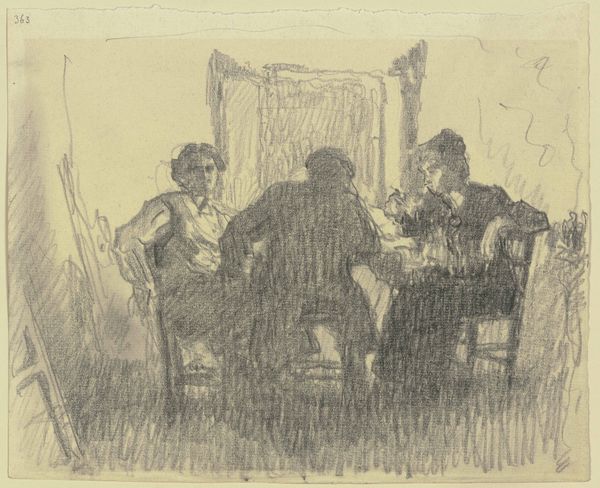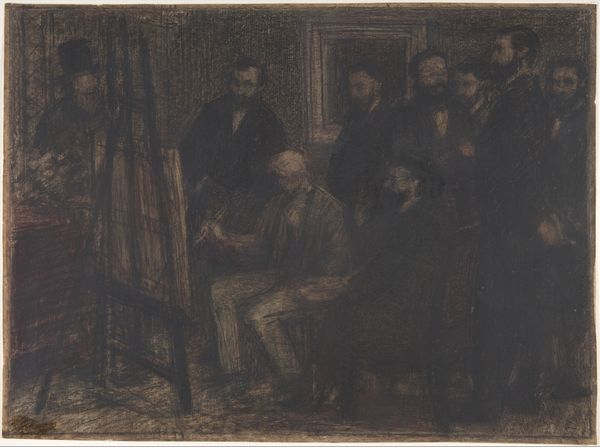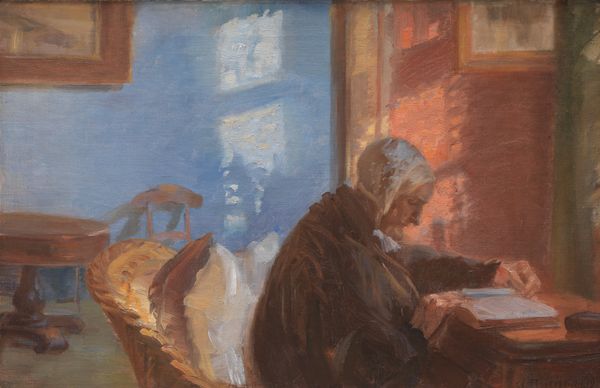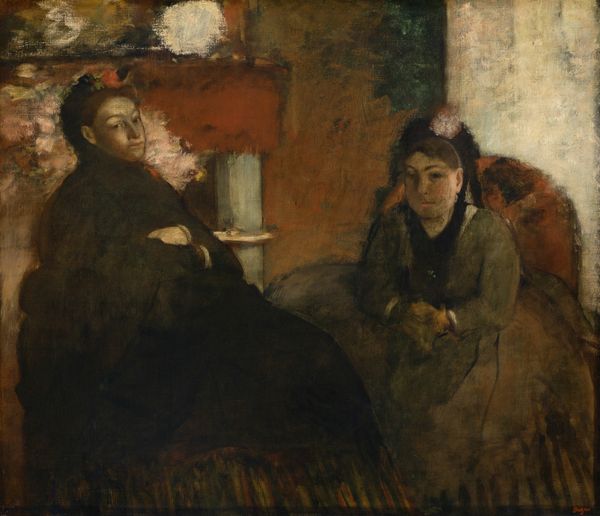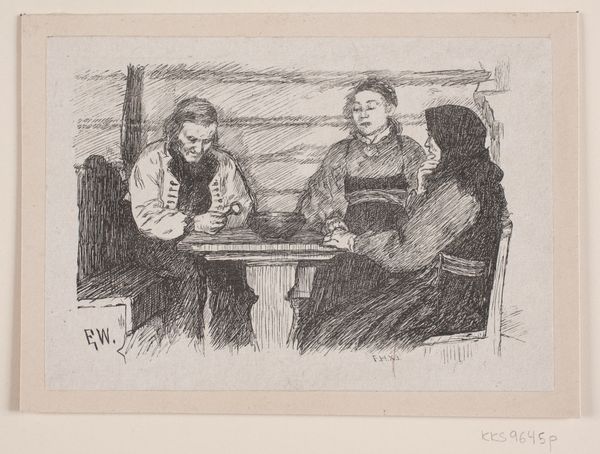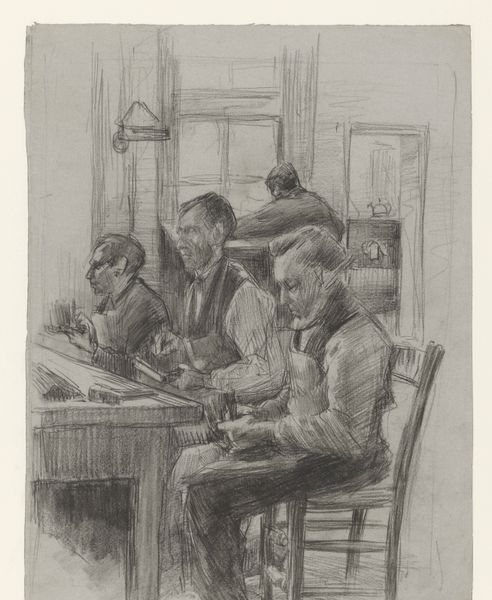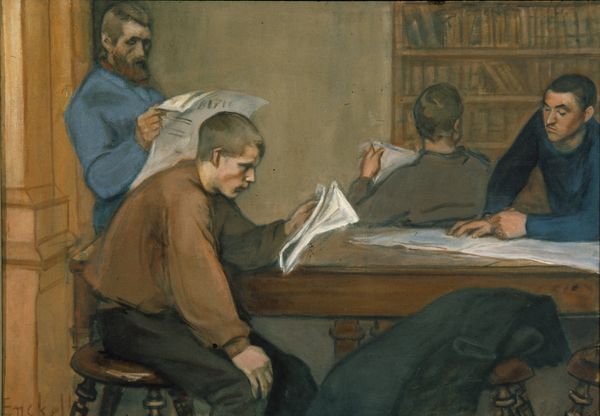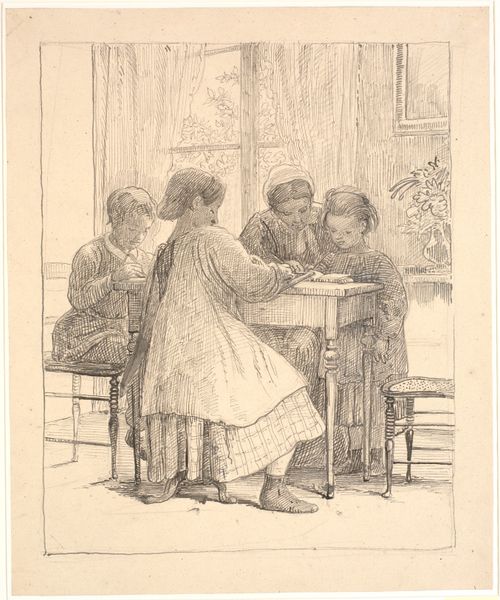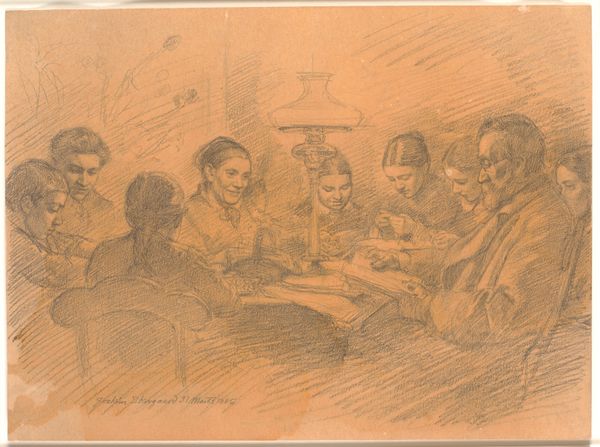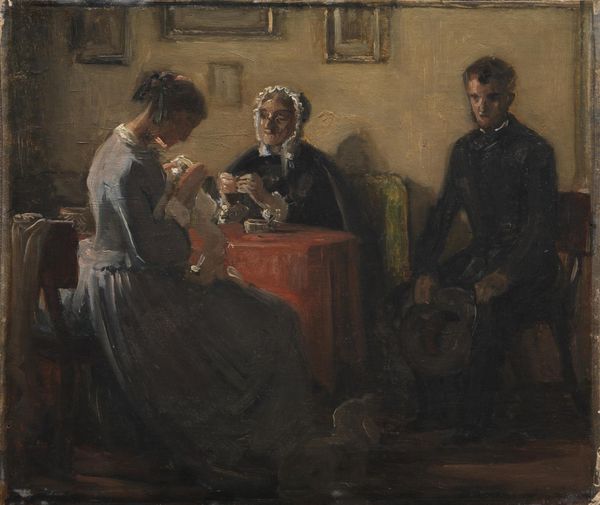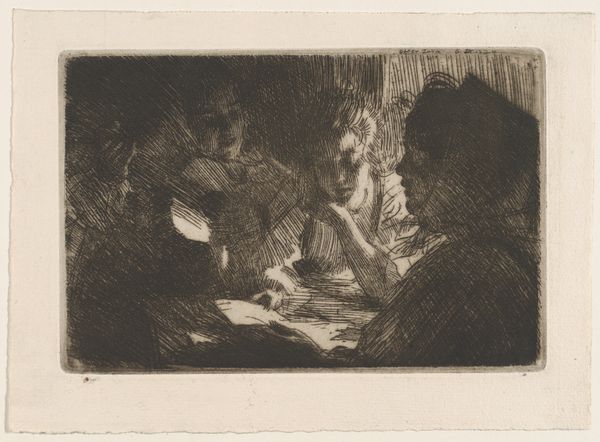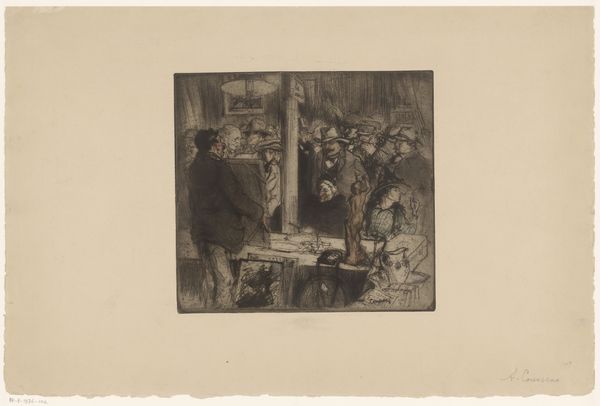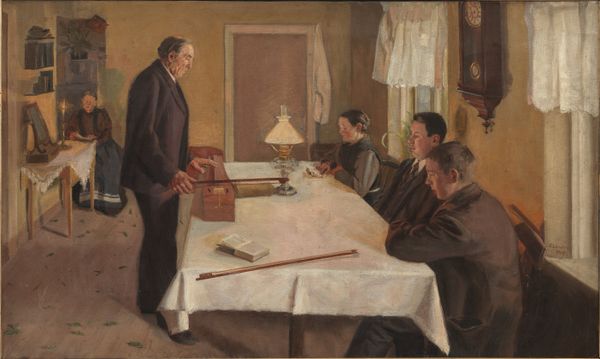
drawing, paper, pencil
#
portrait
#
drawing
#
dutch-golden-age
#
charcoal drawing
#
paper
#
pencil
#
portrait drawing
#
genre-painting
#
realism
Dimensions: height 585 mm, width 860 mm, height 69 cm, width 96 cm, depth 8 cm
Copyright: Rijks Museum: Open Domain
Anthon van Rappard made this drawing of blind mat weavers in 1887. The image of these figures bent over their labor speaks to the artist’s socialist sympathies and broader efforts by artists in the Netherlands at this time to engage with the lives of the working class. Note the tight composition of the image and the way the figures are cropped. This contributes to the sense of being enclosed within a cramped space and echoes the repetitive nature of their work. By depicting the figures with downcast faces, Van Rappard seems to want to elicit empathy from the viewer. The artist himself came from a wealthy background and would likely have been dependent on income from his family. Like many artists of this period, he sought to find a role for art in representing those who were excluded from mainstream society. Further research into the artist’s correspondence with Vincent van Gogh would shed more light on the artist’s intentions here. Art of this kind serves as a historical record, offering valuable insights into the socio-economic conditions that shaped its creation.
Comments
No comments
Be the first to comment and join the conversation on the ultimate creative platform.
